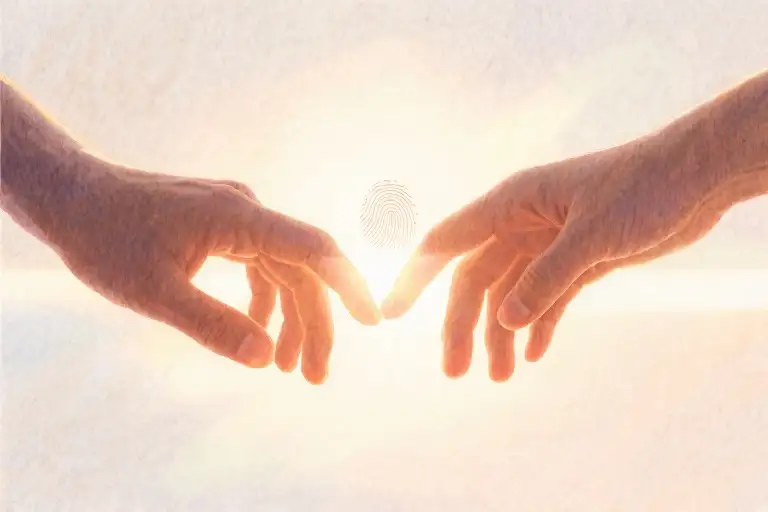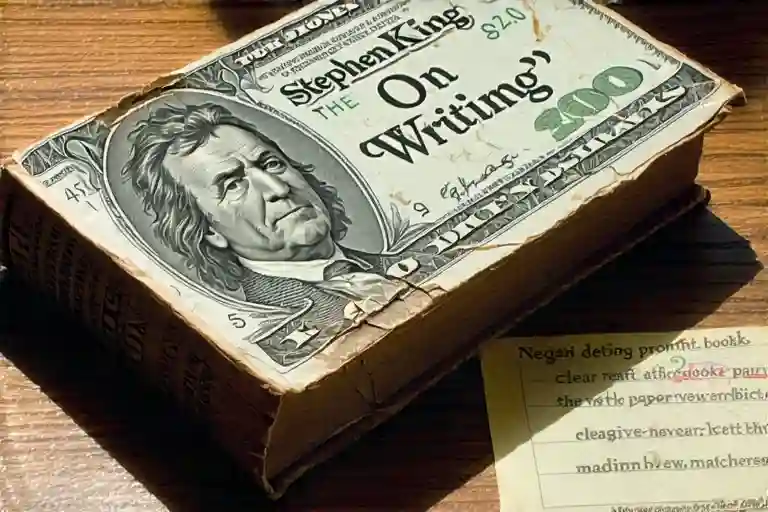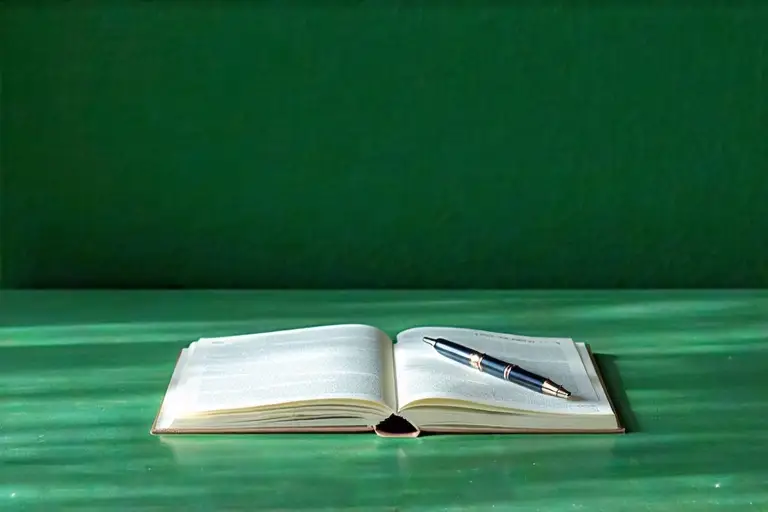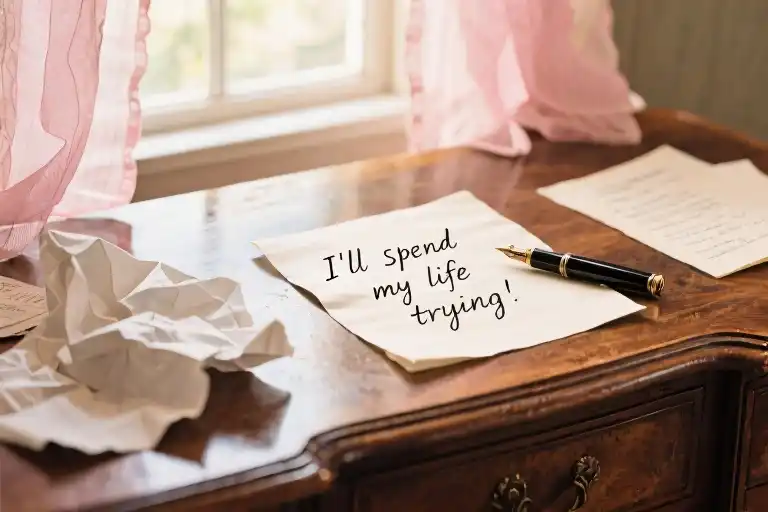The rain taps against my window like an insistent muse, each drop a potential beginning to a story I swear won’t include you this time. My fingers hover over the keyboard, determined to write about rebirth, about spring after winter—anything but the familiar ache I’ve revisited too often. Yet three paragraphs in, I catch myself describing someone who walks like you, laughs in that quiet way you did when you thought no one was listening.
There’s a particular frustration in realizing how thoroughly another person has rewired your creative instincts. The words resist my efforts to steer them toward safer shores, pulling instead toward those emotional coordinates where your memory resides. My coffee grows cold as I delete yet another sentence that somehow, inevitably, circles back to you.
Perhaps this is what they never tell us about meaningful connections—they don’t simply visit our lives, they take up residence in our creative DNA. Your perspectives have become lenses through which I observe the world; your phrases surface in my dialogue; the cadence of your speech rhythms my paragraphs. Even in absence, your influence persists like the faint graphite lines beneath a finished sketch, invisible to most but foundational to the artist.
Some people are a poem you never stop writing.
The realization arrives not with despair but with quiet revelation. These aren’t creative failures—these recurring motifs are testaments to love’s enduring imprint. My keyboard remembers the weight of words I formed about you; my notebooks bear the indentations of stories where you appeared, sometimes named, sometimes disguised but always recognizable to me.
Tonight’s rain becomes a metaphor I didn’t choose but can’t escape—persistent, shaping landscapes over time, both eroding and revealing what matters most. I close my laptop, allowing the truth its space: healing isn’t about perfect avoidance, but about learning to carry what shaped us with grace. The stories may change, but the hands that write them always bear the fingerprints of everyone who ever taught them how to feel.
The Imprint of Love—When Someone Becomes a Ghost in Your Writing
The cursor blinks on a blank page, mocking my determination. Tonight, I promised myself—no more stories about you. I’ll write about spring rain tapping against windows, about strangers meeting on trains, about anything but the way your laughter used to sound at 2 AM. Yet three paragraphs in, there it is—a side character with your habitual head tilt, a description of hands that move exactly like yours. I hit delete. Start over. The fourth attempt somehow conjures your favorite metaphor about constellations.
The Uninvited Muse
Creative writing instructors always say “write what you know,” but they never warn about the memories that write themselves into your work. A novelist friend confessed she’d rewritten a protagonist seven times before realizing the character kept evolving back to her college sweetheart’s mannerisms. A poet at a workshop discovered three consecutive pieces contained the same imagery her ex once used in love letters. These aren’t artistic failures—they’re evidence of how deeply love rewires our creative pathways.
Neuroscience explains this phenomenon through emotional memory consolidation. When experiences carry intense feelings, the brain stores them in both the hippocampus (fact-based memory) and the amygdala (emotional processing). Subsequent creative acts activate these neural networks, causing what psychologists call “involuntary memory retrieval.
The Shadow in the Frame
Julia, a portrait photographer, shared her version of this struggle: “For two years after the breakup, clients kept asking why so many compositions featured subjects leaning against doorframes. Then I saw our last vacation photo—him standing exactly that way in our Airbnb.” Her subconscious had turned a personal memory into an artistic signature.
This persistence isn’t about clinging to the past. As memory researcher Dr. Elaine Hughes notes: “The brain doesn’t distinguish between ‘wanted’ and ‘unwanted’ memories during creative states. What matters is the emotional weight attached to the experience.”
When the Ghost Becomes a Guide
Rather than fighting these apparitions, many artists learn to collaborate with them:
- Character Alchemy: Transform recurring traits into original creations (e.g., turn “his nervous lip-biting” into a detective’s tell when lying)
- Setting Transposition: Place familiar emotions in new environments (write “your goodbye at the airport” as a submarine crew member’s last surface glimpse)
- Metaphor Migration: Convert personal details into universal symbols (change “the scar on your knee from our hiking trip” to “cracked pavement where roots push through”)
As the rain outside my window blends with the fictional storm onscreen, I finally understand—these ghosts aren’t haunting my writing. They’re reminding me how deeply I can feel, and that’s the raw material all great art requires.
The Truth About Healing – Memory Is Not the Enemy
We’ve all heard it before: “Time heals all wounds.” It’s one of those well-meaning phrases people offer when they don’t know what else to say. But here’s what nobody tells you – time doesn’t erase memories, it just changes our relationship with them. That person who once meant everything to you? They don’t disappear from your thoughts just because the calendar pages turn. And that’s okay.
The Myth of Forgetting
Modern psychology has shown us something fascinating about emotional memories. Studies at Harvard and Stanford have demonstrated that traumatic or emotionally charged memories aren’t stored the same way as ordinary ones. They get special treatment in our brains, like VIP guests who never really leave the party. When researchers asked participants to write about painful experiences, brain scans showed remarkable activity in both the emotional centers and creative regions.
This explains why you might be:
- Writing a simple grocery list when suddenly their favorite snack appears in your notes
- Watching a random movie only to realize the lead character has their mannerisms
- Hearing a song that wasn’t “yours” but now carries their ghost
Redefining Healing
True healing isn’t about deletion – it’s about reintegration. Think of memory like clay rather than stone. We can’t chip away at it, but we can reshape it into something new. That college sweetheart who broke your heart? They’re no longer just the person who left – they’ve become the reason you understand resilience. The friend who betrayed you? They taught you about setting boundaries.
Psychologists call this “narrative reconstruction.” It’s the process where we:
- Acknowledge the pain (instead of pretending it doesn’t exist)
- Examine its role in our personal growth
- Repurpose the emotional energy into creative expression
The Creative Solution
Here’s where it gets interesting. That research about trauma and creativity? It shows something revolutionary. Participants who channeled their painful memories into artistic expression (writing, painting, music) showed:
- 40% faster emotional recovery
- Greater cognitive flexibility in problem-solving
- Increased self-awareness compared to control groups
Your memories aren’t obstacles – they’re raw materials. That inside joke that now feels bittersweet? It could be perfect dialogue for a character. Those mixed feelings every spring when the cherry blossoms bloom? That’s poetic imagery waiting to happen.
Your New Healing Toolkit
Try these science-backed methods to transform memories:
- The Perspective Shift
- Write about the memory from three different angles: past you, present you, and a fictional character
- Notice how the emotional weight changes with each version
- The Metaphor Machine
- Take one specific memory and describe it using five different metaphors
- Example: “Our goodbye was like… a library closing forever/a sandcastle at high tide/a radio losing signal”
- The Time Capsule Letter
- Write a letter to your past self about this memory
- Then write a reply from your future self
- File them away for three months before rereading
As you work with these exercises, you’ll notice something profound happening. The memories don’t disappear, but their emotional charge transforms. What once was pain becomes material. What was regret becomes wisdom. And that person who still appears in your stories? They’re no longer haunting you – they’re collaborating with your creative spirit.
Because here’s the beautiful truth nobody tells you: Some memories aren’t meant to fade. They’re meant to be worked like rich soil until something new can grow from them. Your healing wasn’t incomplete – you were just using the wrong definition. Real healing leaves scars, and those scars make for powerful stories.
Turning Fingerprints Into Ink: Creative Alchemy for Lingering Love
Every writer knows that moment when a character refuses to behave. You try to mold them into someone new, but their edges keep reshaping into familiar contours. That’s how emotional echoes work in our creative process – persistent, adaptable, yet unmistakably present in every iteration.
The Unsent Letter Technique
Begin with paper and pen (the physicality matters). Address it directly to the person who lingers in your creative subconscious. Here’s the crucial part: this letter isn’t about communication, but about alchemy. You’re not writing to send, but to transform.
Why it works:
- Neuroscientific studies show the act of handwriting accesses different brain pathways than typing, creating stronger emotional processing
- The unedited flow bypasses creative resistance – you’ll often discover unexpected metaphors worth developing
- It creates a ritualistic separation between raw emotion and crafted art
“The first draft is you telling yourself the story. The revisions are you discovering how to tell it to others.” Keep the letter private, then mine it for these elements:
- Sensory details you associate with them (the scent of rain on concrete, the texture of their favorite sweater)
- Unfinished dialogues – what you never said or wish you’d said differently
- Recurring images that appear unconsciously
Mythic Transformation Method
When personal memories feel too raw, transpose them into archetypal patterns. That intense but doomed college romance? Suddenly it’s Orpheus turning too soon in the dorm hallway lights. The mentor who betrayed your trust? Now they’re a shapeshifting trickster figure in your fantasy novel.
Creative distancing tools:
- Costume change: Place them in an entirely different era or world
- Gender flip: Surprisingly effective for gaining new perspective
- Elemental symbolism: Let them become the storm, the stubborn oak, the fading ember
Case Study: A poet client kept writing about her mother’s hands. Through this method, those hands became:
- A clock’s moving parts (time theme)
- Tree roots breaking concrete (resilience theme)
- A puppeteer’s strings (control theme)
Digital Alchemy Assistants
When stuck between literal memory and creative transformation, these tools can help:
- Muse (muse.com)
- AI that asks probing questions about your emotional blocks
- Generates metaphor suggestions based on your keywords
- The Emotion Wheel (online interactive versions available)
- Identifies nuanced feelings beneath surface emotions
- Helps translate “anger” into “betrayed anticipation” for richer writing
- Archetype Cards (physical or app versions)
- Random draws create unexpected character combinations
- The Lover + The Destroyer = compelling new dynamic
Remember: These are bridges, not destinations. The technology matters less than the intentionality you bring to the process.
The Alchemist’s Journal
Create a dedicated space (notebook, digital doc, voice memos) for these raw materials. Over time, you’ll notice patterns emerging – certain colors, weather conditions, or objects that carry emotional weight. These become your personal symbolic language.
Weekly practice:
- Mondays: Free-write memories (no editing)
- Wednesdays: Transform one element into mythic imagery
- Fridays: Craft a micro-story using three transformed elements
What begins as personal catharsis gradually becomes your distinctive creative fingerprint. That’s the paradox – by fully embracing how certain people marked us, we stop repeating their stories and start speaking in voices unmistakably our own.
The Eternal Poem: Why Some People Are Meant to Be Written Again and Again
There’s a quiet magic in how certain souls imprint themselves onto our creative consciousness. Like Beethoven composing his Moonlight Sonata for that mysterious “Immortal Beloved,” we too find ourselves returning to the same emotional landscapes in our writing. These aren’t artistic failures—they’re evidence of love’s enduring presence in our creative DNA.
The Symphony of Unfinished Love
History’s greatest artists have shown us that profound connections become creative fuel. Beethoven never revealed the identity of his “Immortal Beloved,” yet that passion transformed into one of classical music’s most hauntingly beautiful pieces. The sonata wasn’t about forgetting—it was about transmuting emotion into something eternal. When we repeatedly write about someone, we’re participating in this ancient artistic tradition of alchemizing love into art.
Modern psychology confirms what artists have always known: emotionally charged memories create deeper neural pathways. That’s why certain people appear in our stories like recurring motifs in a symphony. Their presence in our work isn’t creative blockage—it’s the mind’s natural way of processing significant experiences through the creative act.
Love’s Residual Proof
Existential philosophers argue that what we repeatedly create becomes evidence of our lived experience. Those characters who keep emerging in different stories? They’re not ghosts—they’re living proof that certain relationships fundamentally changed how you perceive the world. Like Rilke’s idea that “love consists in this, that two solitudes protect and touch and greet each other,” these creative residues show we’ve been truly touched by another soul.
This explains why writers often discover their “signature themes” originate from specific relationships. The person you can’t stop writing about gave you a new lens to view:
- Human vulnerability (through how they trusted you)
- Joy (in those spontaneous moments you try to recapture in prose)
- Loss (that now informs how you write about separation)
Your Turn: The Poem That Writes Itself
Here’s an invitation: instead of resisting these recurring figures, create intentionally with them. Try this:
- The Character Remix: Take that familiar presence and place them in an entirely new genre or time period. How would they behave in a cyberpunk dystopia? A Regency romance?
- The Metaphor Translation: If you always describe their eyes, challenge yourself to represent their essence through:
- A natural phenomenon (tidal patterns, desert winds)
- An architectural feature (a spiral staircase, stained glass)
- A musical instrument’s voice
- The Legacy Letter: Write what their presence in your creative work has taught you about:
- The type of love worth writing about
- How heartbreak expanded your emotional vocabulary
- Why some connections become creative muses
Share your discoveries with the hashtag #MyUnfinishedPoem—you’ll be amazed how many others are composing variations on the same emotional theme.
The Beautiful Paradox
Here’s the secret veteran writers know: the people we can’t stop writing about have given us an extraordinary gift—they’ve become part of our creative voice. Like Virginia Woolf’s observation that “words do not live in dictionaries, they live in the mind,” these individuals no longer exist just in memory—they’ve become living components of your artistic lexicon.
So the next time you find them appearing in your work again, don’t erase the lines. Thank them silently for helping you discover how deep your capacity to feel—and create—truly goes. After all, isn’t that what immortal beloveds do? They don’t vanish—they transform into the ink that writes your next beautiful sentence.
When the Rain Stops: Making Peace with the Stories That Remain
The rain has finally ceased its whispering against my windowpane. The cursor still blinks on the empty document, but something has shifted in these quiet hours between storm and stillness. I no longer fight the truth that’s been pooling around my feet like rainwater—you will always exist in my stories, not as a ghost to exorcise, but as ink blended into my very vocabulary of being.
The Paper Remembers
They say ink dries, but every writer knows paper never forgets the pressure of pen upon its surface. Those faint indentations remain long after the visible marks fade, just as certain people leave permanent textures in our creative consciousness. This isn’t failure; it’s the natural topography of a life fully lived. The Japanese practice of kintsugi comes to mind—not disguising the breaks, but illuminating them with gold. What if we treated our emotional residues with similar reverence?
Creative exercise: Run your fingers across a page you’ve written longhand. Notice how even uninked words leave their whispers. Now apply this to your craft—what ‘indentations’ from past loves make your current writing uniquely textured?
The Unfinished Poem Paradox
Here’s the secret no writing manual will tell you: some stories aren’t meant to reach ‘The End.’ Like Elizabeth Bishop’s “One Art,” their power lives in the perpetual drafting, the continuous renegotiation of loss and meaning. That person who lingers in your metaphors? They’ve become your creative collaborator, whether you chose it or not.
“We don’t write to immortalize people—we write because they already immortalized something within us.”
Your Turn at the Page
As daylight breaks through rain-washed windows, I extend this challenge to you:
- Take any unfinished piece haunted by a persistent presence
- Circle every unintended reference to them (a simile, a description, a rhythm)
- Rewrite one section not to remove, but to honor their role in your creative evolution
Notice how the exercise isn’t about erasure, but about conscious integration. The goal isn’t to stop writing about someone, but to graduate from writing at them to writing through what they taught you.
The First Line Awaits
My coffee has gone cold, the storm has passed, and this document finally holds words that no longer fight their own ancestry. The cursor still blinks—not as an accusation now, but an invitation. Where will your indelible memories lead your next sentence?
“All writing is rewriting, especially when rewriting our hearts.”
Your unfinished poem’s next stanza begins here. Not despite the fingerprints left upon you, but because of them.





